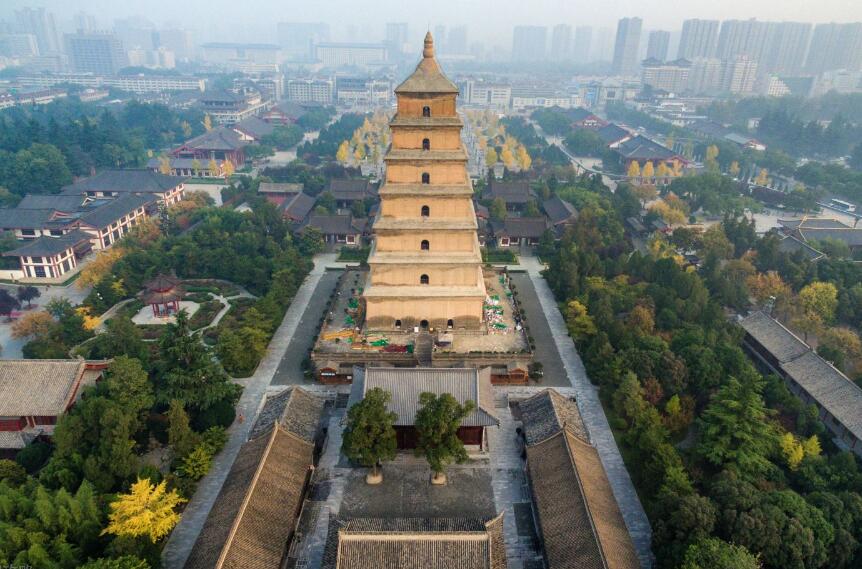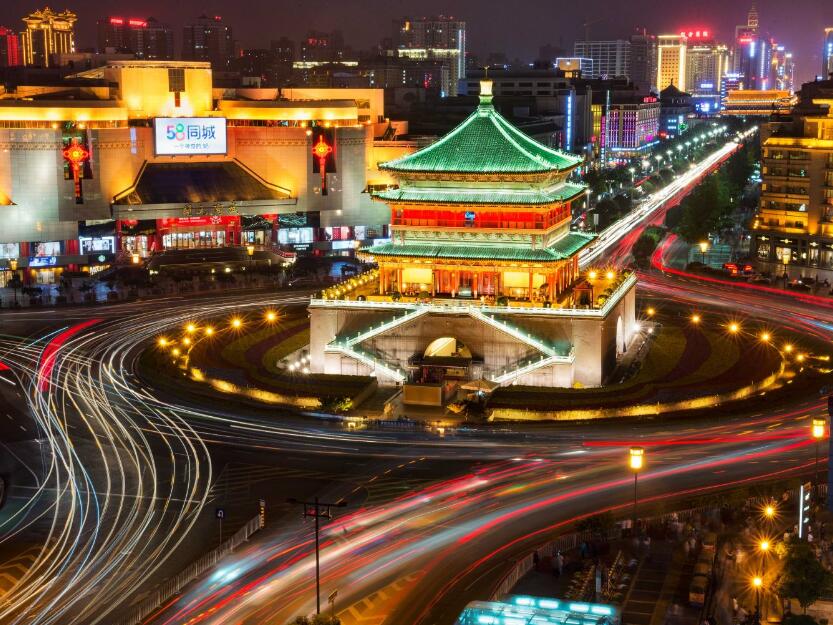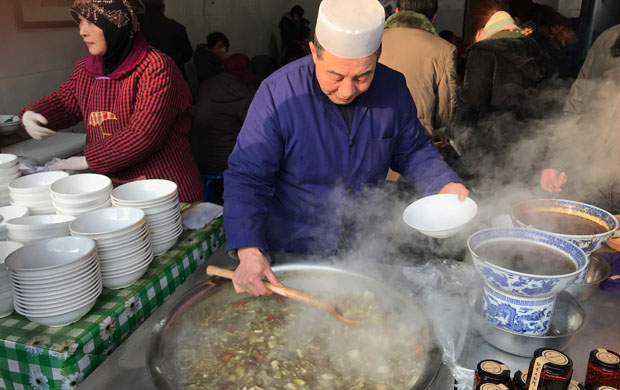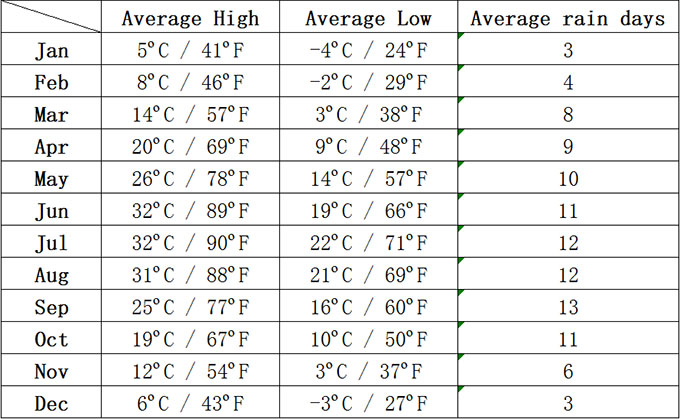Xi'an
Located in Shaanxi province, in an area once known as the "Kingdom of Heaven", Xi'an is home to one of the most important archaeological discoveries of our time. It is a city with fantastically rich culture and history, and a cuisine to match! A magnificent city wall still encircles the city center, echoing times passed, and the streets are bustling with activity.
Things to Do and Travel Advice
Shaanxi province was the domain of the Qin dynasty, the first that sought to unite China. The Qin made Xi'an their capital.
Once the location of the beginning and end of the Silk Road, the first Imperial capital of China found fame long before the establishment of Beijing. It is these strong historical links that makes Xi'an a historically rich location boasting a unique combination of religion and culture. This blend of religion and culture is reflected in its landmarks.
The main attraction of Xi'an is undoubtedly the Terracotta Army and with good reason. The greatest archaeological find of the 20th century, Emperor Qin Shi Huang's mausoleum is also the final resting place of around 8,000 terracotta warriors who have been guarding his resting place for over 2,000 years. Discovered by fortunate accident in 1974, the incredible preparation the Emperor undertook for the afterlife is awe-inspiring, resulting in this fascinating army in which no two of the warriors are the same.

The wall that encircles the city center is another unmissable sight, dating back to the Ming dynasty. The wall stands 12m high and is 14km in length. The old city wall is one of the few in the Middle Kingdom that remain standing and restorations mean that you can traverse its entirety by foot or bicycle.
Xi'an is home to one of China's most vibrant Muslim communities and within the City Walls, you will find the Muslim Quarter, alive with the scent of delicious local food. The Great Mosque that lies close to the area is one of the largest in China and boasts a unique blend of traditional Chinese and Islamic architectural traits.
The city center also plays host to the Bell Tower and Drum Tower. Used respectively to signal dawn and nightfall, the two towers date back to the 14th century (both were rebuilt in the 18th century).
Among the city's many historic temples and towers is the Big Wild Goose Pagoda (Dayanta). Arguably Xi'an's most noticeable landmark, it dominates the skyline in juxtaposition with its modern surroundings. The pagoda dates back to the Tang dynasty, who also made Xi'an their capital.
For visitors who want to experience the best Xi'an has to offer, the five sites mentioned above should be at the top of your list and will usually take you around one and a half to two days.

If you have longer to spend in the city, don't miss the opportunity to visit the Shanxi History Museum, which contains relics from China's many dynasties including some Terracotta Warrior figures. The fascinating Tomb of Emperor Jingdi (Hanyangling) features thousands of miniature soldiers and animals but does not see hoards of tourists.
Tangbo Art Museum is another nice place where you can learn more about Chinese folk art and try your hand at some Chinese calligraphy. See more attractions in Xi'an here.
Eating in Xi'an
While the sites around Xi'an are breathtaking, Shaanxi cuisine is an attraction in and of itself. Many cultures have contributed to the shaping of the dishes you will find in Xi'an and top on the list for any foodie visiting the city should be a trip to the Muslim Quarter — especially for those fond of spices and succulent lamb. All of the food is simply delicious but you should keep an eye out for the dishes below in particular:
Suantang shuijiao: Trying these hot and sour soup dumplings is a must while you are in Shaanxi. The dumplings are made with mutton, diced leek, and sesame, as opposed to the pork that is common throughout the rest of China.
Roujiamo: Xi'an's answer to the burger, this dish of braised meat and leavened bread dates back further than its western counterpart and is arguably more delicious. Find the best lamb and beef roujiamo in the Muslim Quarter (they are a great portable snack to enjoy while you're walking around, too!).

Paomo: The quintessential Xi'an dish, paomo is unleavened flatbread soaked in rich mutton soup. A tear-it-yourself approach to the bread means paomo is a unique, hands-on, and delicious experience.
Biangbiang Noodles: As well as being delicious, biangbiang noodles are famous for having the most complex character in Chinese (made up of 53 strokes) in their name. Biangbiang noodles are incredibly thick and long, with just one giant noodle sometimes being served in each bowl! This dish can also be found in the Muslim Quarter at Loubeilou Fanzhuang.
Outside of the Muslim Quarter, Dongmutou Shi has a good selection of restaurants.
Nightlife in Xi'an
Evenings in Xi'an offer many diversions, whether it’s wandering the lively streets, taking in a show or relaxing at one of the city's many watering holes.
The Tang Dynasty or Shaanxi Grand Opera House dinner shows are great options. Both boast traditional music and dance with tickets available including or excluding dinner. Shaanxi is the cheaper alternative, while Tang Dynasty is definitely the more extravagant. You can also watch the daily fountain and music show located in Big Wild Goose Pagoda Square (times vary seasonally between 8-9pm).
The city boasts fantastic nighttime scenery, with many of the major sights, including the City Wall, the Bell Tower, and the Big Wild Goose Pagoda, beautifully illuminated.
Most of the city’s bars are located on Defu Xiang (close to the South Gate). If you want to listen to live music, look for Moonkey Music Bar. For true night owls, the clubs can be found on or around Nandajie, one of the most popular being 1+1.
Transportation
As a major tourist destination, Xi'an boasts one of China's most connected airports, with daily flights to several international and most domestic destinations. Xi’an Xianyang International Airport is located around 41 kilometers from the city center, near the city of Xianyang. Alternatively, there are frequent trains to most major domestic destinations from Xi’an Railway Station and Xi'an North Station (high-speed trains only).
Within the city, Xi'an has a three-line metro system that can be used to navigate between all tourist attractions. In addition, there are a large number of public bus routes, with the most convenient being the 610 departing from Xi'an Railway Station and passing several of the major sites.
Best Time to Visit
Pleasantly warm temperatures make April and May an ideal time of year to visit Xi'an, although the city may be crowded. To avoid the rain but still enjoy some warmth, try to plan your visit around September or October. October is also the time of Kurban Bairam, a four-day festival of sacrifice that takes place in all of China's Muslim communities. December to February are the winter months and along with being cold, the air is usually more polluted at this time of year.
